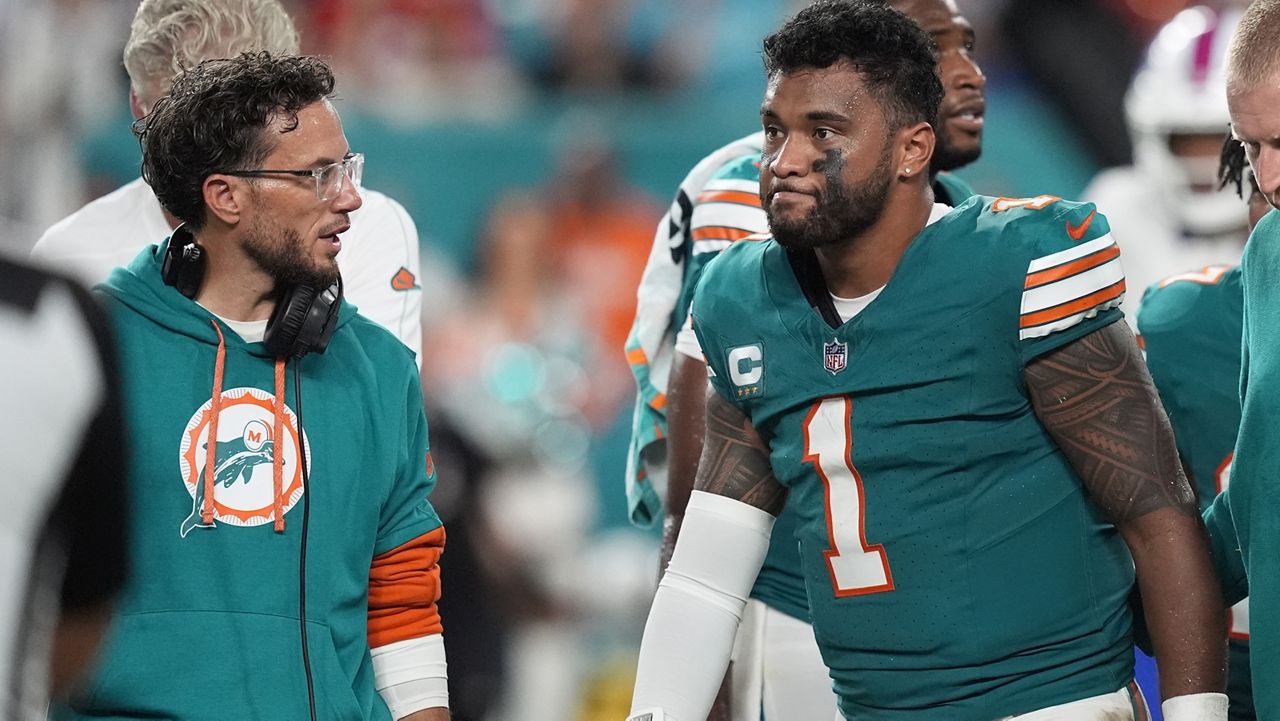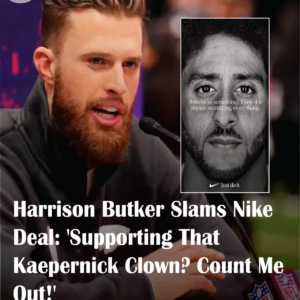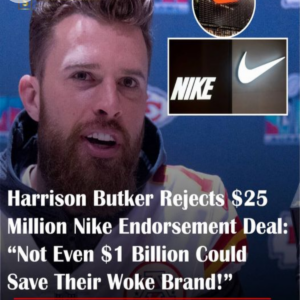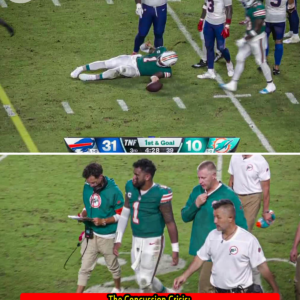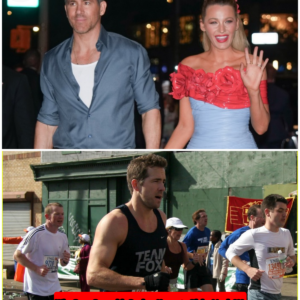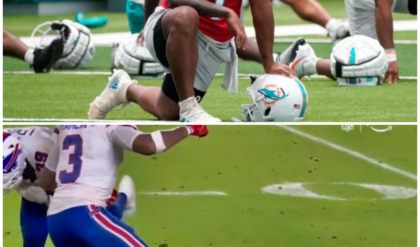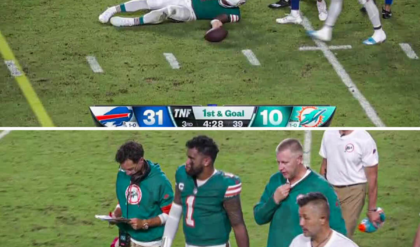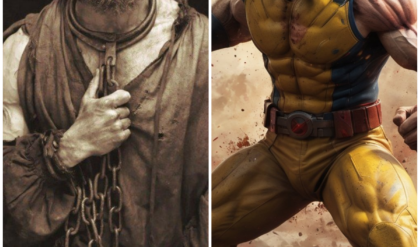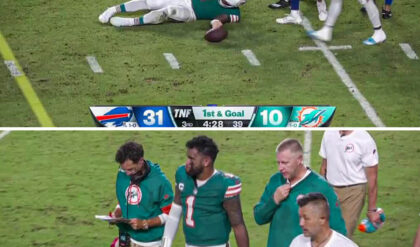In the world of professional football, injuries are an unfortunate reality, but few are as alarming as those that involve head trauma. The latest incident involving Miami Dolphins quarterback Tua Tagovailoa during a Thursday Night Football game against the Buffalo Bills has once again raised concerns about player safety and the long-term effects of concussions.
This article will explore the details of the incident, its implications for Tagovailoa’s career, and the broader conversation surrounding player health in the NFL.

The Incident: A Hard Hit and Immediate Aftermath
During the game, Tagovailoa attempted to scramble towards the end zone, a move that many quarterbacks make in crucial moments. However, he was met with a devastating hit from Bills safety Damar Hamlin.
The impact was severe, causing Tagovailoa to hit the ground hard, leading to immediate concern from players, coaches, and fans alike. The quarterback struggled to regain his footing, clearly disoriented and in distress.
After several tense minutes on the field, Tagovailoa was finally able to walk off under his own power. However, the sight of him struggling to get up was alarming and served as a stark reminder of the risks players face every time they step onto the field.
The immediate concern for his health overshadowed the game’s outcome, with fans and analysts alike focusing on the potential implications of another head injury.
Performance Before the Injury: A Struggling Game
Before the injury, Tagovailoa was having a challenging night on the field. He completed only 145 yards with one touchdown and three interceptions, raising questions about his performance and the overall health of the Dolphins’ offense.
The game was pivotal for the Dolphins, who were looking to secure a win against a tough division rival. However, Tagovailoa’s struggles highlighted the pressure he faces as a starting quarterback in the NFL, especially after his previous concussion-related issues.
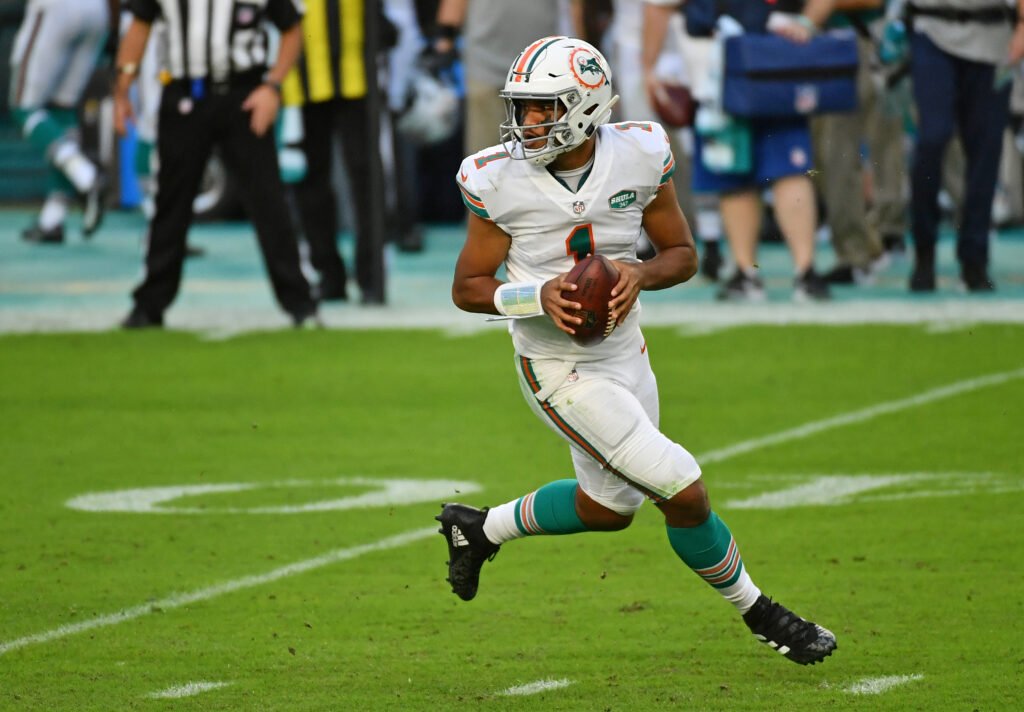
The Broader Implications: Player Safety and the NFL’s Response
The NFL has made strides in recent years to improve player safety, particularly regarding concussions. However, incidents like Tagovailoa’s raise questions about the effectiveness of these measures. The league has implemented stricter concussion protocols, including mandatory evaluations for players suspected of having a concussion.
Despite these efforts, many believe that more needs to be done to protect players, especially those like Tagovailoa, who have a history of head injuries.
The conversation surrounding player safety is not just about immediate injuries but also about the long-term effects of concussions. Studies have shown that repeated head trauma can lead to chronic traumatic encephalopathy (CTE), a degenerative brain disease that has affected many former players.
As Tagovailoa continues his career, the potential for long-term health issues looms large, making it imperative for the NFL to prioritize player safety above all else.
Tagovailoa’s Journey: From Concussions to Jiu-Jitsu
After suffering multiple concussions last season, Tagovailoa took proactive measures to protect himself on the field. He began practicing jiu-jitsu to learn how to fall safely and reduce the risk of head injuries. This decision reflects a growing trend among players to seek alternative training methods to enhance their safety and performance.
His commitment to learning how to fall properly paid off during the 2023 season, as he did not miss a game despite the ongoing risk of injury. However, the latest incident serves as a reminder that no amount of training can completely eliminate the dangers of football. As Tagovailoa navigates his career, he must balance the desire to compete with the need to prioritize his health.

The Road Ahead: What’s Next for Tua?
The NFL community will be watching closely, not only for Tagovailoa’s recovery but also for how the league responds to this incident. Will they implement further changes to their concussion protocols? How will they address the ongoing concerns about player safety? These questions remain at the forefront of discussions surrounding the league.

A Call for Change in the NFL
Tua Tagovailoa’s latest concussion scare is more than just a moment of concern; it is a reflection of the ongoing issues surrounding player safety in the NFL. As fans, players, and organizations grapple with the realities of head injuries, it is crucial to advocate for changes that prioritize the health and well-being of athletes.
The NFL has the power to make significant strides in player safety, but it requires a collective effort from all stakeholders. As we continue to follow Tagovailoa’s journey, let us hope for his swift recovery and a future where the health of players takes precedence over the game itself. The conversation must continue, and change is necessary for the sake of current and future generations of football players.
News
🤼 The Controversy of Nike and Colin Kaepernick: A Deep Dive into Harrison Butker’s Bold Stance
In the world of sports, few topics ignite as much passion and debate as the intersection of politics and athletics. Recently, NFL kicker Harrison Butker has made headlines with his outspoken criticism of Nike, a brand that has been synonymous…
💶 Harrison Butker’s Bold Stand: Turning Down $25 Million from Nike
Harrison Butker, the star kicker for the Kansas City Chiefs, has made headlines for his audacious rejection of a staggering $25 million partnership with Nike. His bold statement, “Not even $1 billion could save their woke brand!” has sparked both…
🤕 The Concussion Crisis: Tua Tagovailoa’s Latest Setback and Its Implications for NFL Players
In the high-octane world of the NFL, where athletes push their bodies to the limits, the risk of injury is an ever-present reality. Recently, Tua Tagovailoa, the Miami Dolphins’ promising quarterback, faced a harrowing situation that has reignited discussions surrounding…
💎 Uncovering the Hidden Gem: The Surprising Les Misérables Reference in Deadpool and Wolverine
In the realm of superhero movies, few franchises have garnered as much attention and acclaim as the Deadpool series. With its unique blend of humor, action, and self-awareness, the films have captivated audiences worldwide. However, it’s not just the outrageous…
🧑🦰 Hugh Jackman’s Hair Secrets: The Wig That Shocked Fans!
Hugh Jackman, the beloved star of blockbuster hits like “Deadpool” and “Wolverine,” recently ignited a firestorm of speculation among his fans regarding his iconic hairstyle. The 55-year-old actor took to Instagram, sharing behind-the-scenes images of himself preparing for a shoot,…
🏍 The Heartfelt Bond: Why Ryan Reynolds Rushes Home to Blake Lively
Where relationships often flicker like candle flames, the love story of Ryan Reynolds and Blake Lively stands as a beacon of unwavering affection and commitment. Recently, the couple celebrated their 12th wedding anniversary, a milestone that speaks volumes about their…
End of content
No more pages to load
